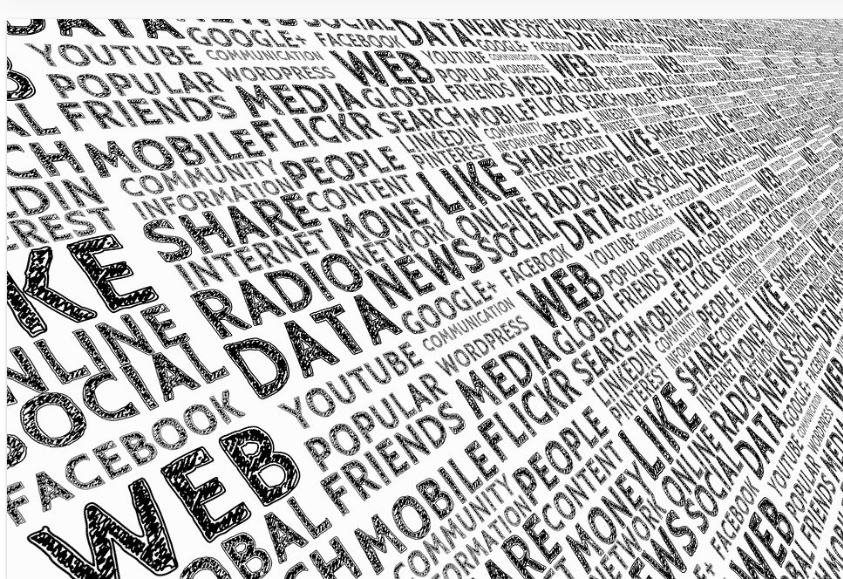9. Learning Pathway: Media Literacy
- Page ID
- 124372
- Standard 1: Media Literacy Connections: Democracy in Social Media Policies and Community Standards
- Standard 2: Media Literacy Connections: The Internet as a Public Utility
- Standard 3: Media Literacy Connections: 21st Century Women STEM Innovators
- Standard 4: Media Literacy Connections: Media Coverage of the Royals
- Standard 5: Media Literacy Connections: Representations of Native Americans in Film, Local History Publications and School Mascots
- Standard 1: Media Literacy Connections: Declarations of Independence on Social Media
- Standard 2: Media Literacy Connections: Marketing and Regulating Self-Driving Cars
- Standard 3: Media Literacy Connections: Representations of and Racism Toward Black Americans in the Media
- Standard 4: Media Literacy Connections: Political Debates Through Songs from the Musical Hamilton
- Standard 5: Media Literacy Connections: The Bill of Rights on Twitter
- Standard 1: Media Literacy Connections: Hollywood Movies About the Branches of Government
- Standard 2: Media Literacy Connections: Writing an Impeachment Press Release
- Standard 3: Media Literacy Connections: Members of Congress Use Social Media
- Standard 4: Media Literacy Connections: Political Impacts of Public Opinion Polls
- Standard 5: Media Literacy Connections: Website Design for New Political Parties
- Standard 1: Media Literacy Connections: Immigration in the News
- Standard 3.2: Media Literacy Connections: Women Political Leaders in the Media
- Standard 4: Media Literacy Connections: Online Messaging by Advocacy Organizations
- Standard 5: Media Literacy Connections: Digital Games for Civic Engagement
- Standard 6.1: Media Literacy Connections: Social Media and Elections
- Standard 6.2: Media Literacy Connections: Media Spin the Coverage of Political Debates
- Standard 8: Media Literacy Connections: Political Activism through Social Media
- Standard 9.1: Media Literacy Connections: Media Recruitment of Public Sector Workers
- Standard 9.2: Media Literacy Connections: Images of Teachers and Teaching
- Standard 11: Media Literacy Connections: Media Framing of the Events of January 6, 2021
- Standard 13: Media Literacy Connections: PACs, SuperPACs and Unions in the Media
- Standard 2.1: Media Literacy Connections: Prohibition in the Media
- Standard 2.2: Media Literacy Connections: The Equal Rights Amendment on Social Media
- Standard 3.1: Media Literacy Connections: Civil War New Stories and Recruitment Advertisements
- Standard 3.2: Media Literacy Connections: Representations of Gender and Race on Currency
- Standard 4: Media Literacy Connections: The Equality Act on Twitter
- Standard 5: Media Literacy Connections: Reading Dissents Aloud
- Standard 6: Media Literacy Connections: Television Cameras in Courtrooms
- Standard 1: Media Literacy Connections: Native American Mascots and Logos
- Standard 2: Media Literacy Connections: A Constitution for the Internet
- Standard 3: Media Literacy Connections: Military Recruitment and the Media
- Standard 4: Media Literacy Connections: Your Privacy on Social Media
- Standard 5: Media Literacy Connections: Pandemic Policy Information in the Media
- Standard 6: Media Literacy Connections: Gendered Language in Media Coverage of Women in Politics
- Standard 7.1: Media Literacy Connections: Trusted Messengers, the Media, and the Pandemic
- Standard 8: Media Literacy Connections: Online Campaigning for Political Office
- Standard 9: Media Literacy Connections: Advertising the Lottery Online and in Print
- Standard 10: Media Literacy Connections: Local Governments, Social Media and Digital Democracy
- Standard 1: Media Literacy Connections: Press Freedom in the United States and the World
- Standard 2.1: Media Literacy Connections: Objectivity and the News from All Sides
- Standard 2.2: Media Literacy Connections: Investigative Journalism and Social Change
- Standard 3.1: Media Literacy Connections: News Photographs and Newspaper Design
- Standard 3.2: Media Literacy Connections: How Reporters Report Events
- Standard 4.1: Media Literacy Connections: Recommendation Algorithms on Social Media Platforms
- Standard 4.2: Media Literacy Connections: Fake News Investigation and Evaluation
- Standard 5: Media Literacy Connections: Critical Visual Analysis of Online and Print Media
- Standard 6: Media Literacy Connections: Memes and TikToks as Political Cartoons
What is media literacy?
Concepts of Media Literacy
Apply the Concepts/Engaging Media Literacy: News and Information Evaluation
References
- Anderson, M. and Jiang, J. (May 31, 2018). Teens, social media and technology 2018. Pew Research Center. Avail: pewinternet.org.
- Aufderheide, P (1993). Media literacy: A report of the national leadership conference on media literacy. Queenstown, MD: The Aspen Institute.
- Buckingham, D. (2003). Media education: Literacy, learning and contemporary culture. London: Polity Press.
- Kaiser Family Foundation (January 20, 2010). Daily media use among children and teens up dramatically from five years ago. Avail: kff.org.
- Kellner, D. and Share, J. (2007). Critical media literacy, democracy, and the reconstruction of education. In Macedo, D. and Steinberg, S. (Eds.), Media literacy: A reader, pp.3-23. New York, NY: Peter Lang.
- Phillips, P. (2018). Giants: The global power elite. New York, NY: Seven Stories Press.
- Fighting Fake News
- Teaching kids news literacy could be a matter of life and death
- How Does "Fake" News Become News?
- Facebook 'danger to public health' warns report
- Critical Media Project
- Buckingham, D. (2003). Media education: Literacy, learning and contemporary culture. London, England: Polity Press.
- Buckingham, D. (2007). Beyond technology: Children’s learning in the age of digital culture. London, England: Polity Press.
- Buckingham, D. (2019). The media education manifesto. London, England: Polity Press.
- Higdon, N. (2020). The anatomy of fake news: A critical news literacy education. Oakland, CA: University of California Press.
Young adult work on how to make sense of fake news:
Media Literacy Project Team
Allison Butler, Senior Lecturer & Director of Undergraduate Advising, Director of Media Literacy Certificate Program, University of Massachusetts Amherst
Ifat Gazia, Graduate Student, University of Massachusetts Amherst
J.D. Swerzenski, Graduate Student, University of Massachusetts Amherst
Yuxi (Cecilia) Zhou, Graduate Student, University of Massachusetts Amherst
Natalie Passov, Undergraduate Student, University of Massachusetts Amherst
Eleanor Sprick, Undergraduate Student, University of Massachusetts Amherst
Benjamin Mendillo, Undergraduate Student, University of Massachusetts Amherst
Kyle Balis, Undergraduate Student, University of Massachusetts Amherst
Kendra Sleeper, Undergraduate Student, University of Massachusetts Amherst



